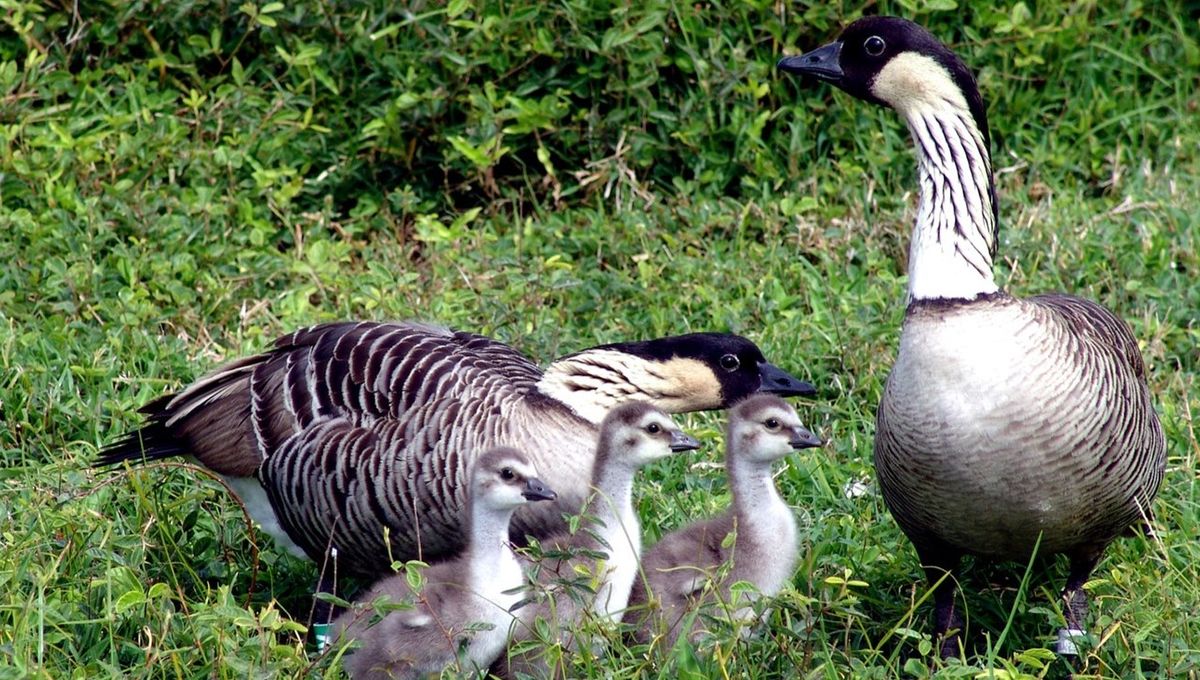
The nēnē, or Hawaiian goose, is the world’s rarest goose, and can only be found living in the wild in one part of the planet: the Hawaiian Islands. There, the species was once on the brink of extinction – but it’s been making one hell of a comeback.
The rarest goose
Perhaps best known as Hawai’i’s state bird, nēnē (Branta sandvicensis) are on the medium side when it comes to geese, measuring around 53 to 66 centimeters (21 to 26 inches) in length. Their bodies are covered primarily with grayish-brown feathers, though their heads and bills are jet black.
While geese are often thought of for their characteristic honks, nēnē actually make a range of different sounds, including low-pitched moo-like noises and cackles, as well as the classic trumpeting.
Nēnē are also pretty tough cookies. Not only can they live for up to 30 years, but they also spend that time zipping across and even making their nests on lava plains. It’s thought they’re able to easily traverse this notoriously rough terrain thanks to their long, strong legs, and well-adapted feet, which are less webbed and more padded than other species of geese.
Coming back from the brink
Nēnē weren’t always so rare; they once thrived for thousands of years. Then, Western contact was made.
“All of these species evolved without human impact, and without mammals basically. And so when people started coming and bringing different animals and insects and diseases – and all of these things were introduced to the islands – the species here were not adapted to those things,” explained Kathleen Misajon, a wildlife biologist at Hawai’i Volcanoes National Park, in an episode of the National Park Service series Voices of Science. “And so they easily fell prey.”
The result was that the population of nēnē across Hawai’i plummeted from an estimated 25,000 before Western contact, to just 30 in the 1950s. As a result, in 1967, the US government designated the goose as an endangered species and placed it under the protection of the Endangered Species Act.
Fast forward to today, and the nēnē has made an impressive recovery. That’s in large part due to captive breeding programs in the 1980s and later, wild breeding and habitat improvement.
It hasn’t been without its problems – in the early days, many of the geese released were killed by mongooses – but the population is now back up to an estimated 1,700 to 2,200 mature individuals. They’re now considered “Near Threatened” rather than “Endangered”.
There’s still a long way to go. Threats to nēnē remain, including feral cats and vehicle collisions.
“I think nēnē really are a great success story, but the story doesn’t end. It’s gonna be […] work in perpetuity, in order to keep the species alive,” said Misajon. “They’re always going to be reliant on some level of assistance from humans.”
But it’s help that scientists like Misajon consider to be worthwhile.
“It’s just so interesting to watch these birds year after year and generation after generation. See how they return to their same spots. See how they use the landscape, and use the natural habitat,” the biologist said.
“They clearly belong there. And it’s nice to be a part of helping ensure that they stay there.”
Source Link: The World’s Rarest Goose Only Lives Wild In One Part Of The US